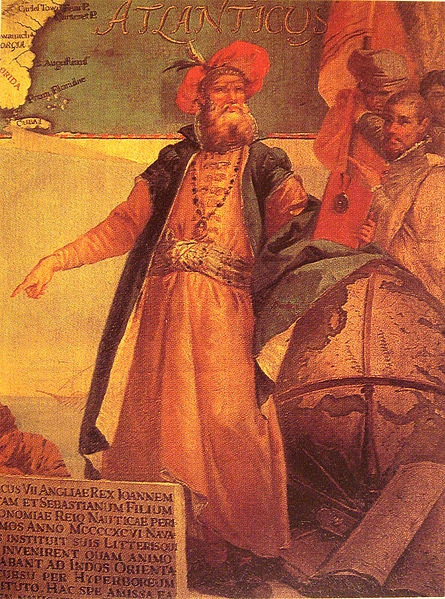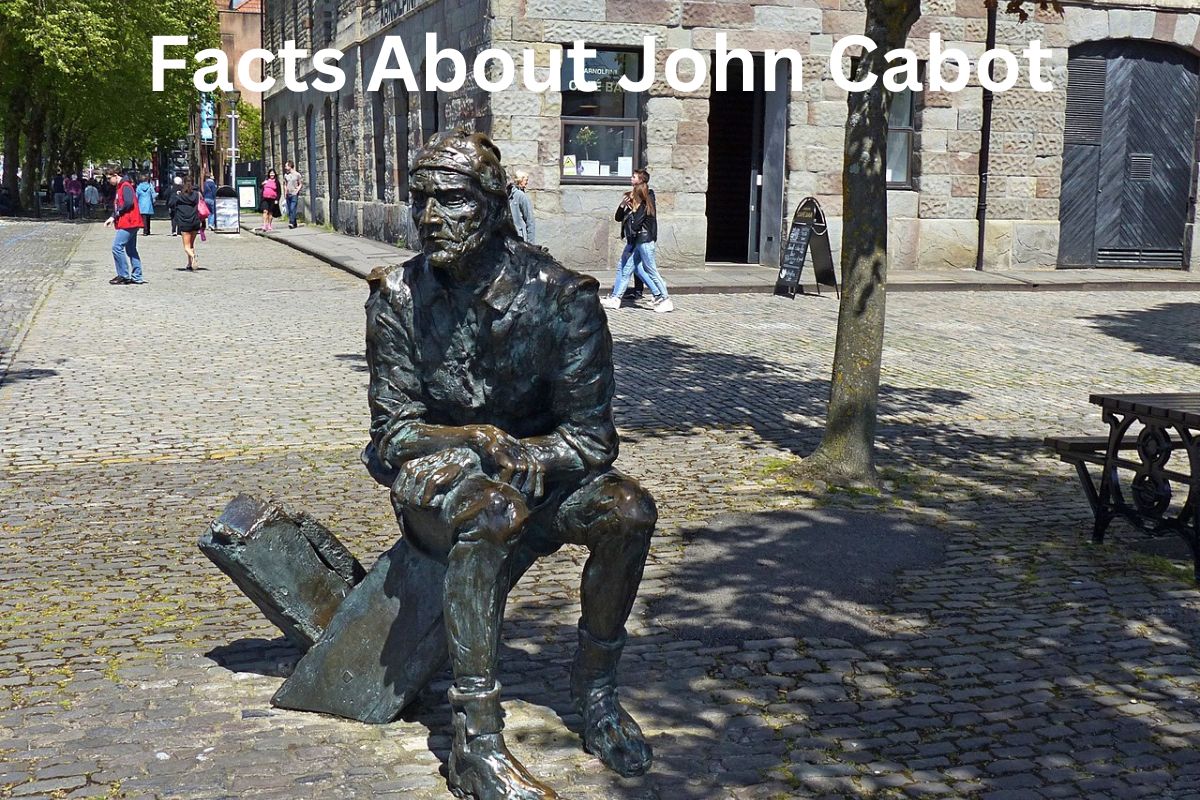John Cabot was an Italian explorer who became famous for his expeditions to North America in the latter half of the 15th century. He is primarily remembered for these travels.
Cabot was the first European to set foot in North America after the Vikings, and he claimed the area he discovered for England, which paved the door for further colonization of the continent.
Cabot’s explorations were essential in staking England’s claim to North America and laying the groundwork for subsequent colonization efforts. His life and accomplishments are still honored in Canada, where he is revered as a national hero.
There are neighborhoods, educational institutions, and even an entire province that bear his name. Moreover, Cabot is remembered in Italy, where he is honored with monuments and museums that are named in his honor.
John Cabot Facts
1. He was born in Genoa, Italy
John Cabot was born in the country of Italy, specifically in the city of Genoa. Nevertheless, he later relocated to the city of Venice, where he eventually became a citizen and married a woman named Mattea.
Also Read: John Cabot Accomplishments
Cabot began his career as a trader in Venice, where he also developed a passion in exploration and commerce.

He was under the impression that he might get to Asia more quickly by crossing the Atlantic in a westerly direction, which is what led to his subsequent travels to North America.
Cabot’s Italian ancestry is an essential element of his identity and legacy, and he is remembered for his exploration and discovery accomplishments in both Canada and Italy. Cabot’s heritage in Italy is an important component of his legacy.
2. He thought sailing West would be a quicker route to Asia
John Cabot had an early interest in commerce and travel, and he was under the impression that he could find a shorter and more direct path to Asia by sailing west across the Atlantic Ocean.
At that time, the Silk Road was the customary way to travel to Asia; however, it was a very difficult and lengthy journey.
Also Read: Facts About Jacques Cartier
The discovery of the Americas by Christopher Columbus in 1492 served as motivation for John Cabot to consider the possibility of a westward path across the Atlantic Ocean.
Cabot’s mistaken belief that he could reach Asia by sailing west led to his exploration of North America in the late 15th century. Cabot’s expeditions began.
3. In 1497, John Cabot was given a commission by King Henry VII of England
In 1497, John Cabot was given a commission by King Henry VII of England to explore the New World and claim any lands he found for England. Cabot’s objective was to claim any lands he found for England.
During this historical period, England had a strong desire to establish a foothold in the New World as well as increase its level of commercial and political dominance.
Also Read: Ponce de Leon Facts
Given his background as a trader and his enthusiasm for travel and discovery, selecting Cabot as the leader of the expedition was a no-brainer.
Cabot was given the permission to claim any territories he discovered in the name of England as a result of the commission that he received from King Henry VII. He exercised this authority when he arrived at Newfoundland, which is now a part of Canada, in June of 1497.
4. On June 24, 1497, he arrived in Newfoundland
In the month of May 1497, John Cabot boarded a vessel known as the Matthew in Bristol, England, with a crew of 18 men. Cabot was on his way to discover the Americas.
Cabot’s intention was to reach Asia by sailing west across the Atlantic Ocean; nevertheless, on June 24, 1497, he arrived in Newfoundland, which is now a province of Canada.
As a result, he is credited as being the first European to set foot in North America after the Vikings. Cabot established English ownership of the territory he discovered and gave it the name “Newfoundland.”
Before making his way back to England, he traveled around the coast of North America, possibly venturing as far south as the state of Maryland at the time.
Cabot is regarded as a national hero in Canada because of his role in the exploration that led to the discovery of Newfoundland and its subsequent settlement.
5. John Cabot returned in 1498 with a fleet of five ships
After the success of his first journey to North America in 1497, John Cabot returned in 1498 with a fleet of five ships. The expedition, however, was less successful than his first.
While Cabot did reach Labrador on this journey, the scope of his explorations remains unknown. Cabot and his ship were lost at sea on the way back, and the fate of Cabot and his crew is unknown.
Some historians believe Cabot endured storms or other obstacles on his expedition, while others claim he was attacked by Native Americans or pirates.
6. Sebastian Cabot, John Cabot’s son, also became an explorer
Sebastian Cabot, John Cabot’s son, also became an explorer and made multiple expeditions to the New World. Sebastian Cabot, like his father, was born in Italy but went to England and became an English citizen.
Sebastian Cabot set out for the New World for the first time in 1508, sailing to Brazil in search of a new path to Asia. Later, he made additional excursions to North America and the Caribbean, where he traded and explored.
Sebastian Cabot’s journeys contributed to the expansion of England’s power in the New World and solidified the English claim to the region.
Sebastian Cabot is also well-known for his contributions to cartography, and he is regarded as one of the most influential mapmakers of his generation. Historians continue to appreciate and study the Cabot family’s record of exploration and discovery.
7. He was awarded a reward and a pension from King Henry VII of England
There is considerable historical evidence that King Henry VII of England honored John Cabot for his discovery of North America.
Cabot is said to have earned a £10 prize from the King for his successful journey, as well as a £20 per year annuity for the discovery.
The actual amount of the reward and pension, as well as the timing of their distribution, are unclear and may be debated by historians.
8. John Cabot encountered financial troubles and became a debtor
Some historical evidence suggests that during his time in Venice, John Cabot encountered financial troubles and became a debtor. It is believed that he fled to cities such as Seville and Valencia in Spain to escape his creditors and to seek new opportunities.
Cabot’s interest in exploration and trade most likely persisted while he was in Spain, and he may have formed key contacts and gained significant knowledge that would later help him in his expeditions to North America.
9. He moved to Bristol, England
After escaping Venice and traveling to several European locations, John Cabot eventually settled in Bristol, England. Bristol was an important port city and trading center at the time, making it an obvious choice for Cabot, who was interested in both exploration and trade.
Cabot was able to acquire finance and backing for his journeys to North America while in Bristol, which eventually led to his discovery of Newfoundland and the creation of English claims to the territory.
Cabot’s relocation to Bristol was a watershed moment in his life and career since it provided him with the resources and opportunity he needed to fulfill his dreams.
10. His death is a mystery
The facts of John Cabot’s final voyage are unknown, as are the fate of the expedition and Cabot’s dying days. Cabot and his crew endured severe conditions, including strong currents and terrible weather, while searching for a northwest passage to Asia in 1498.
Cabot’s ship is thought to have gotten caught in a storm and may have perished at sea. There are no documents or stories of the expedition or its end, and it is unknown what happened to Cabot and his company.
Some historians believe Cabot died in the catastrophe, while others believe he and his crew escaped and sought to establish a settlement in the New World.
Unfortunately, there is no tangible evidence to support these claims, and Cabot’s fate and final journey remain one of the great mysteries of exploration history.
